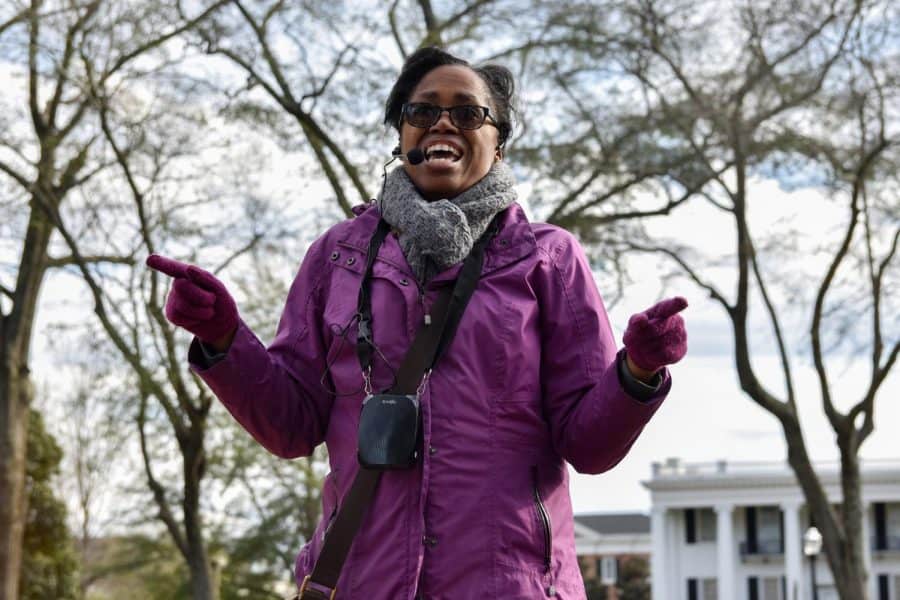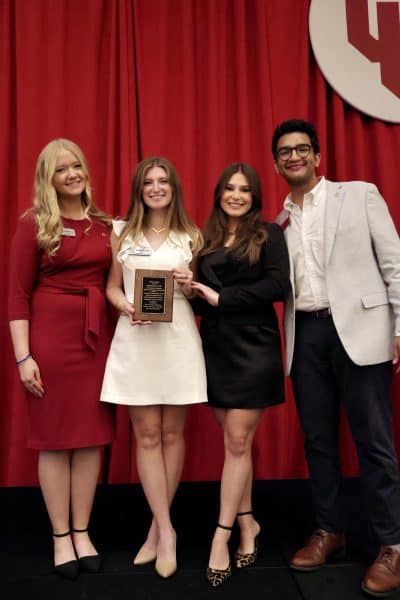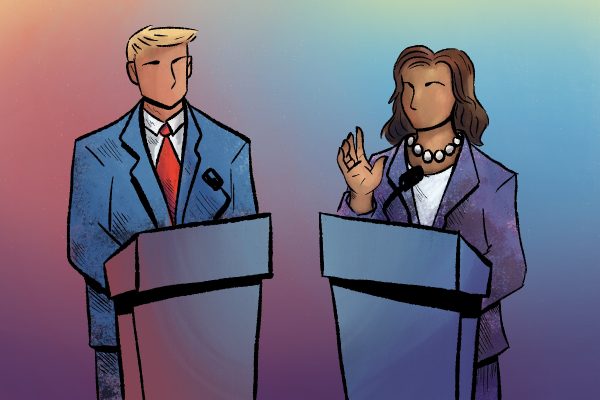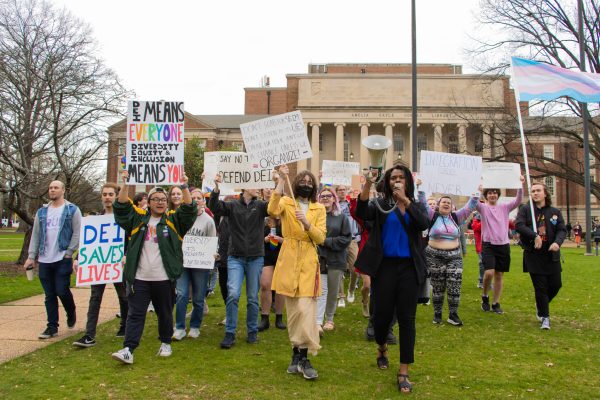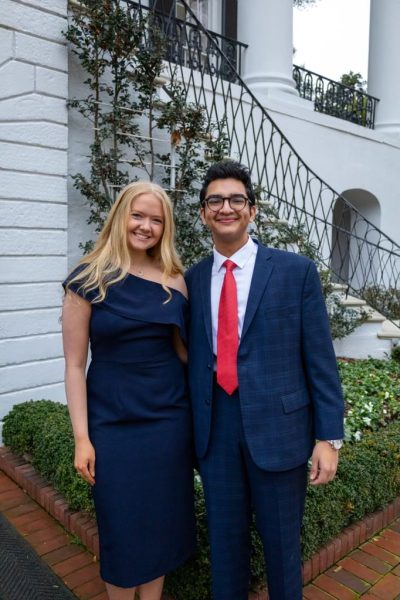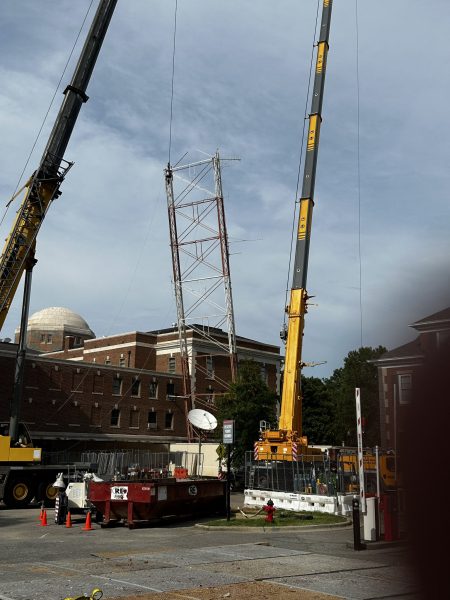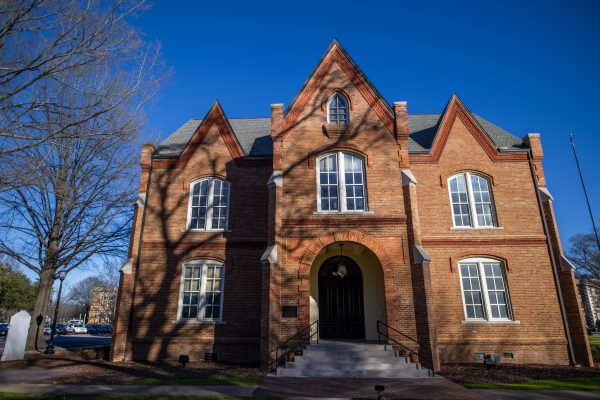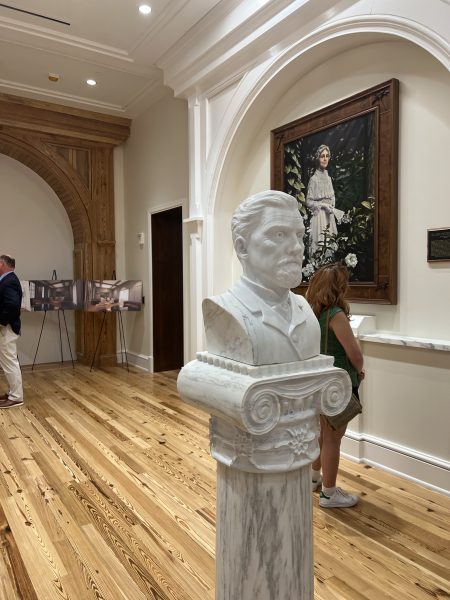‘Lest we forget:’ A Q&A with professor Hilary Green
More stories from Javon Williams
Hilary Green is an associate professor of history in the Department of Gender and Race Studies at the University of Alabama. Green studies the following topics: the American Civil War, race, class, and gender in African American history, Civil War memory, Reconstruction, the U.S. South, the Atlantic world and 19th century America.
What fascinated you and led you to involve your research around slavery and the Civil War?
Well, it was two things. When I came to the UA on my interview, I was curious about the Guardhouse because there was a historical marker there that mentioned slaves on it, and it reminded me that ‘Oh there were slaves? Well, who were those slaves?’ The second was a student in my second semester, a black male, who said slavery did not exist at UA [and questioned] why we study it at universities. It was intellectual curiosity and a student. I just love the hunt of research and telling the unspoken stories that were always there and that no one talks about. What were their names? What were their lives like?
Could you explain how the Hallowed Grounds Project began?
I was getting students to ask me, “Where are the resources?” “Where is that located?” and “How can I bring this into my classroom?” It became a way to make accessible documents I taught in my classes to the wider public. During these tours I encounter people who were not enrolled in my classes. I got alumni, African American homeschool parents and community members. Making the project into a full project beyond the tour gave individuals a way to engage with this history and not just be available to those who are in my classroom.
What impact do you think your research will have on the Tuscaloosa community and campus?
For the community, I am starting to see that impact. One of the largest groups of people that I contact a lot is the Tuscaloosa Civil Rights History Task Force. I’m being asked how to bring the story about Civil Rights stories of Tuscaloosa to a wider public, how to tell those stories in narratives and make sure that it’s balanced and includes African American voices in that history, and how to develop a community-based project that takes UA faculty, Stillman faculty and community members to build upon something more inclusive.
For our campus, I’m known for the tour. People who go on the tour and take my classes tell their friends about this history and are sharing their knowledge. Everyone who takes the tour then feels like we are UA, too – Let us share the story as well. The campus has gone from knowing the history to more people knowing and wanting to learn more and engage, but [they are] also walking across these spaces and thinking, ‘Slave people walked here. I’m going to walk here.”
What do you hope the community gains from your research?
One of the things I hope they gain from this is, yes, [slavery] is a difficult and hard conversation to have, but things I want them to learn is that this is a shared past that affects all of us. Through education and a willingness to listen and learn and talk to one another, we can possibly talk about the issues that are affecting our presence, that people are afraid to talk about in terms of race relations, class relations. One of the things that I like to pass to my students is UA is the best place to do this. How many institutions can say they went from slavery and owning people to the present diversity we have, to our football teams to a campus that is willing to walk in the heat and learn about this slave past, and then having different conversations about making this campus an even more inclusive space for everyone?
What are the three books you are working on and a general summary of each?
Lest We Forget: African American Memory of the Civil War
Going from 1865 to the present, I am starting on the African American porch and how I became a historian of African American history from the stories of both my mother’s side of the family who were free people of color in Pennsylvania who had to hide during Gettysburg because of the seizing and enslaving of free African Americans and the stories of my dad’s family from the Galicia Islands where we know which six plantations they came from. The last chapter is what my role is today in this process as a descendant of these communities who’s involved with this UA community, and the only difference between my ancestors and the other people that I am talking about in this book is that they are enslaved and have very little education, whereas I have my Ph.D. and I have the archival training. So, I am combining oral history and family history with archival to tell a story that these community stories matter, and if we talk about the Civil War memory, we need to talk about the diversity of the Civil War memory among African Americans.
The Confederate Monuments Reader
This book will be about the debates and resistance of African Americans who never accepted those monuments and those vandalize these monuments as a protest to college campuses, and how to deal with this history once there’s desegregation. It’s a reader with primary sources and short essays that can be taught at the high school level.
The Hallowed Grounds Project (currently in progress)
I like to talk about freedom and post-war stuff, so I am going to look at slavery at UA but follow those formerly enslaved people to Reconstruction Tuscaloosa and look at what they built. I’ll bring the narrative back to UA with desegregation and go up to the 1970s. I want to give a history of the enslaved people who were here and the long presence of African Americans and the community of Tuscaloosa, where we find ourselves in this history/legacy memorial of different entities.

